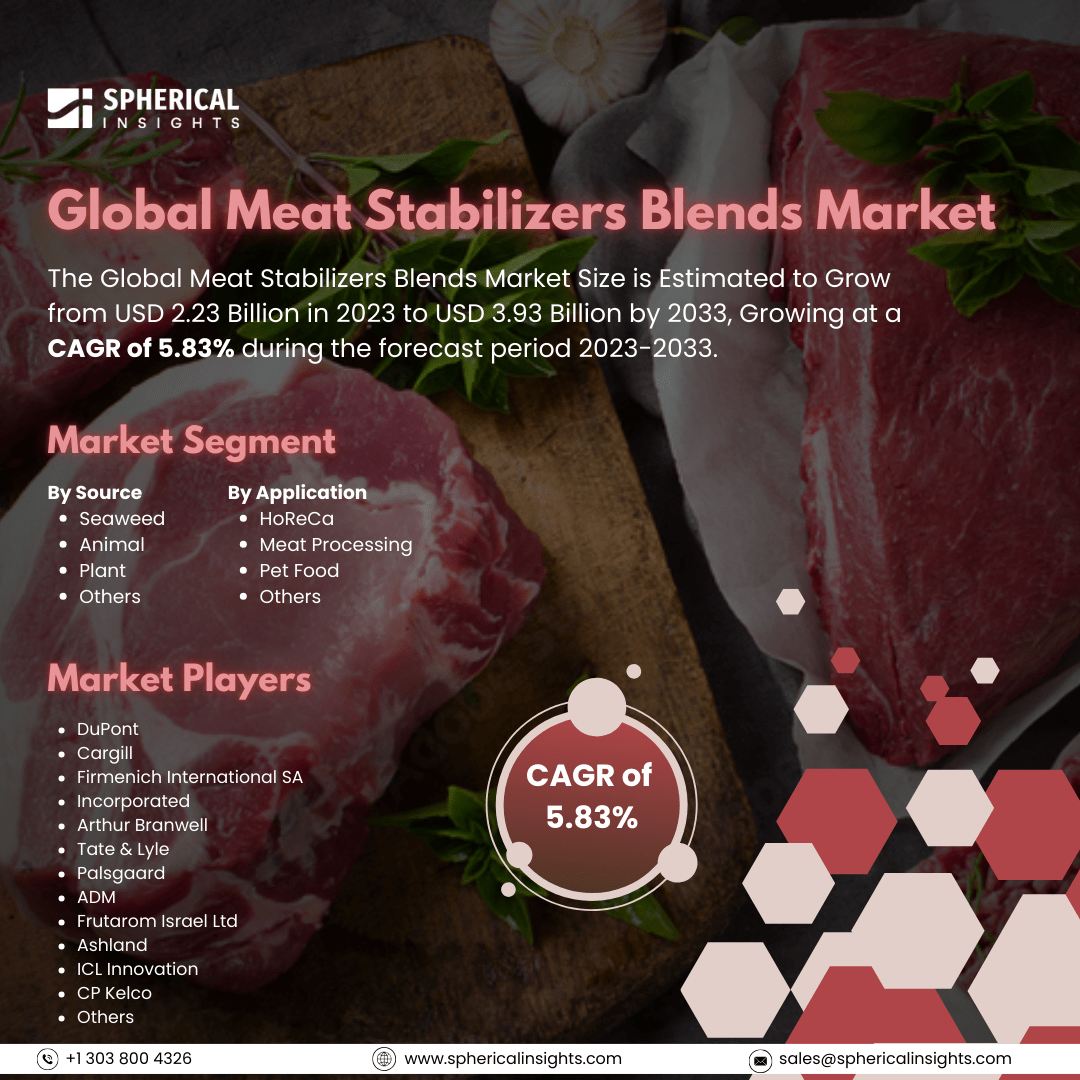Global Biorationals Market Size to worth USD 2541.1 Million by 2033
According to a research report published by Spherical Insights & Consulting, the Global Biorationals Market Size is Expected to Grow from USD 1034.2 Million in 2023 to USD 2541.1 Million by 2033, at a CAGR of 9.41 % during the forecast period 2023-2033.
Browse key industry insights spread across 210 pages with 110 Market data tables and figures & charts from the report on the Global Biorationals Market Size, Share, and COVID-19 Impact Analysis, By Product (Botanical and Semiochemicals), By Crop (Fruits & Vegetables, Grains, Cereals, and Corn), and By Region (North America, Europe, Asia-Pacific, Latin America, Middle East, and Africa), Analysis and Forecast 2023 – 2033.
The biorational market refers to the industry involved in the production, distribution, and application of biorational products, which include pesticides and fertilizers derived from natural or biological sources. These products are designed to be highly effective against target pests or improve plant health while being environmentally sustainable and posing minimal risks to human health, beneficial organisms, and ecosystems. Biorationals are increasingly adopted in agricultural practices, especially in integrated pest management (IPM) systems, organic farming, and horticulture. The market is primarily driven by the growing demand for sustainable agricultural solutions and the rising awareness of environmental concerns associated with synthetic agrochemicals. Increasing government initiatives and regulatory policies promoting the adoption of eco-friendly pest control and crop management products further accelerate market growth. Additionally, the expansion of organic farming practices and the growing focus on residue-free agricultural produce contribute significantly to the market's development. However, the market faces certain challenges. High costs associated with the production and development of biorational products, coupled with the limited availability of these solutions in certain regions, act as key restraining factors.
The botanical segment accounted for the highest share in 2023 and is expected to grow at a significant CAGR during the forecast period.
Based on the product, the biorationals market is divided into botanical and semiochemicals. Among these, the botanical segment accounted for the largest share in 2023 and is expected to grow at a significant CAGR during the forecast period. This dominance is attributed to the increasing use of plant-derived products in sustainable farming practices, which are effective, environmentally friendly, and safe for non-target organisms. Botanicals are widely preferred in organic farming and integrated pest management (IPM) systems due to their natural origin and minimal environmental impact.
The fruits & vegetables segment accounted for the largest share in 2023 and is expected to grow at a significant CAGR during the forecast period.
Based on the crop, the biorationals market is classified into fruits & vegetables, grains, cereals, and corn. Among these, the fruits & vegetables segment accounted for the largest share in 2023 and is expected to grow at a significant CAGR during the forecast period. This dominance is driven by the rising demand for high-value crops that require protection against pests and diseases, coupled with the increased adoption of biorational products in horticulture and organic farming practices. The need for residue-free produce and adherence to stringent regulations regarding pesticide use in fruits and vegetables further support the growth of this segment.
Asia Pacific is estimated to hold the greatest biorationals market share over the forecast period.
Asia Pacific is estimated to hold the greatest biorationals market share over the forecast period. The region is likely to expand further at a steady CAGR maintaining its leading position throughout the forecast period. The growth is attributed to the increased agricultural activities in the region coupled with high crop demand from major countries, such as the U.S., and countries of the European region. The major driving factor behind the market growth in Europe is the product usage in vegetable & fruit plantations due to the ongoing agricultural and fruit & vegetable plantation development projects across countries, such as Germany, France, the U.K., and Italy.
Middle East and Africa is predicted to have the fastest CAGR growth in the biorationals market over the forecast period. This growth is driven by an increasing focus on sustainable agricultural practices, rising awareness of environmentally friendly crop protection solutions, and initiatives aimed at improving food security. Countries in the region are progressively adopting advanced agricultural inputs, including biorational products, to enhance crop productivity and address challenges such as soil degradation and pest infestations.
Competitive Analysis
Major key players in the biorationals market are Koppert B.V., Bayer AG, Isagro S.P.A, Gowan Company LLC, Summit Chemicals Company, Suterra, Russell IPM, Agralan Ltd, BASF SE, Syngenta, Monsanto, CropScience, Chemtura, Nufarm, and DuPont.
Key Target Audience
- Market Players
- Investors
- End-users
- Government Authorities
- Consulting And Research Firm
- Venture capitalists
- Value-Added Resellers (VARs)
Market Segment
This study forecasts global, regional, and country revenue from 2023 to 2033. Spherical Insights has segmented the biorationals market based on the below-mentioned segments:
Global Biorationals Market, By Product
Global Biorationals Market, By Crop
- Fruits & Vegetables
- Grains
- Cereals
- Corn
Global Biorationals Market, By Regional Analysis
- North America
- Europe
- Germany
- UK
- France
- Italy
- Spain
- Russia
- Rest of Europe
- Asia Pacific
- China
- Japan
- India
- South Korea
- Australia
- Rest of Asia Pacific
- South America
- Brazil
- Argentina
- Rest of South America
- Middle East & Africa
- UAE
- Saudi Arabia
- Qatar
- South Africa
- Rest of the Middle East & Africa



